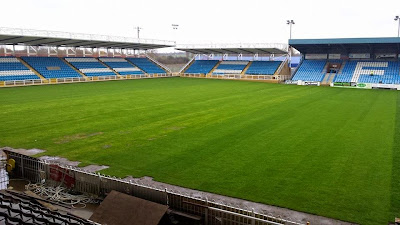Two brothers who clocked up almost 800 games for Featherstone Rovers between them.
 |
| Jim Denton |
Jim and Sid Denton were in the line-up for Featherstone Rovers’ first
ever game, and more than a decade later they were still going strong.
Jim Denton’s appearance record still stands today, and the brothers
consistently held the Rovers back-line together in the early years of
senior rugby at Post Office Road. All the famous early games for
Featherstone including our first ever Yorkshire Cup final (1928) and
first ever Championship final (1928) featured both Jim and Sid Denton.
Jim signed for Rovers aged 18 as World War One was finishing, and before
long he was starring in Rovers’ all-conquering first team in their
final years of junior rugby. Jim was 21 when Rovers made their senior
debut, appearing on the wing where he played most of his rugby. As well
as his career total of 440 games, which may never be beaten now Stuart
Dickens has retired, he was also Rovers’ first prodigious points scorer.
Dangerous running, fierce tackling and accurate kicking were features
of his play. By the time he had retired, he had set records for tries,
goals and points that would take decades to beat. In thirteen seasons he
was top points scorer twelve times, top goal scorer eleven times and
top try scorer four times. His career tally of 129 tries still puts him
in third position on our all time tries list, and he lies 12th on the
goals list with 377 goals, and 8th on the points list with 1,141. What a
colossal contribution.
 |
| Sid Denton |
Jim’s brother Sid also played plenty of his early rugby on the wing,
including our first senior match at Bradford in 1921, on the opposite
flank to his brother. He later settled in at full-back, and played the
majority of his 349 games there. A solid and dependable defender, he was
a good kicker too. His relatively low try total of 28 reflects the
nature of full-back play in those days. He may not have caught the
headlines in the way that his brother’s scoring exploits did, but Sid
Denton was an integral part of Featherstone Rovers for eleven full
years. Both brothers were also very handy cricketers and turned out for
Featherstone in the Yorkshire Council. Their uncle, David Denton was one
of Yorkshire’s greatest ever run-scorers. The fine tradition of rugby
league players doubling up in the summer sport effectively ended with
Rugby League’s shift to summer. See here: http://marklaspalmas.blogspot.com.es/2013/01/sid-denton.html

























